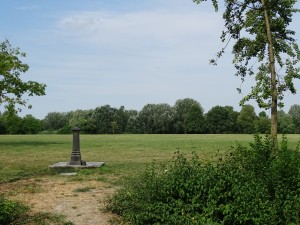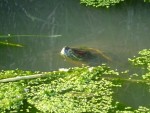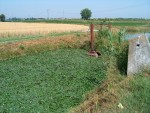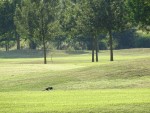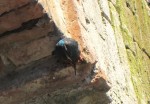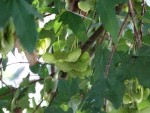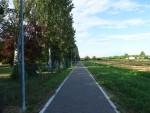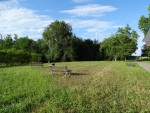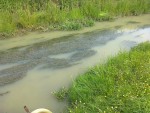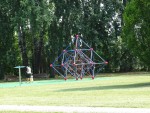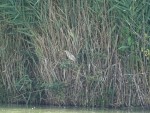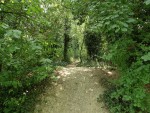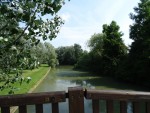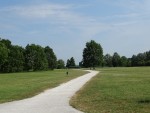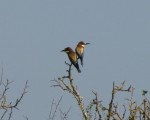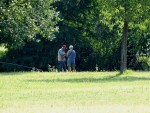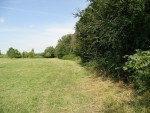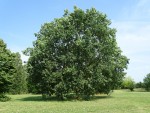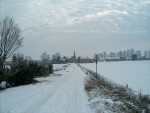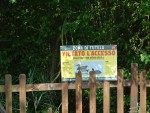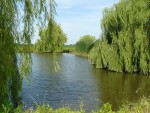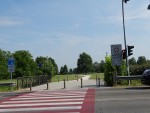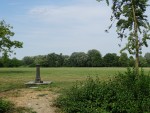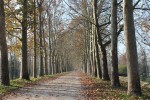Giorgio Bassani Park
Named after writer Giorgio Bassani, this park covers 1,200 hectares to the north of the city, forming what is called the ‘Green Addition’.
Location
Found to the north of the city walls, this park covers 1,200 hectares in total. It extends north to reach the bank of the River Po, west to Via Canapa and the Bologna-Padua railway line, and east to Via dei Calzolai. It occupies a plot of land known as the Barco, an Este hunting estate connected to the Delizia di Belfiore, within the city walls. It is divided into a few parts that vary by their use. A bike path runs along the eastern edge, adjacent to Via dei Calzolai, and makes it possible to reach the banks of the Po in Francolino by bicycle. Another informal path, also bicycle-friendly, cuts through it in a winding route, connecting it to the embankment road near Pontelagoscuro.
This large area acts as an open-air connection between the greenbelt that flanks the city walls and the Natura 2000 site of the Po.
The park is often used to hold outdoor events, such as the Vulandra International Kite Festival (April) and the Ferrara Balloons hot air balloon festival (September).
History of the City Park
Named Bassani Park in honour of the Italian writer and poet that spent part of his life in Ferrara, this city park was once the hunting grounds for the Este family. It is presumed to be established as a hunting lodge (Barco) in 1471.
During the Renaissance, with the changes to the city that resulted from the work of Biagio Rossetti and by the diverted course of the Po, it was given protected status and divided up among numerous landowners after the Este dukes fell from power. Over the centuries, little was built on this land, even during the early phases of urban industrialisation, which mostly expanded the city in other directions.
The value of the park began to be recognised in the 1960s, with efforts to protect the area taking shape. As a result, in the mid-1970s, it was registered on City Plan maps as an Urban Territorial Plan.
Giorgio Bassani and Paolo Ravenna were two important figures in this first step, thereby creating the Green Addition, an area that coincided with a new urban plan comprehensive of outdoor areas. In 1978, they collaborated on a survey of the area to evaluate the state of conservation of the city walls, with the ultimate goal of restoration.
That led to the launch of the Protection and Enhancement Project in 1996, benefiting the cultural and environmental heritage of the City Park thanks to the Ferrara Environmental Department’s commitment to making the area more enjoyable and available to the public.
Services and structures in the City Park
The park is divided into various areas, each with a different intended use.
The part closest to the city walls (that most often called Bassani Park) is a large public park with fields, hedges, trees, playgrounds and pitches, bike paths and small lakes, often used for events.
Another section of the park has been designated for recreational activities, such as a camping area, the University Sports Centre, with gyms, a pool, a restaurant, lodgings and an 18-hole golf course, and a senior citizens community centre.
The central section is where the old city dump used to be, now filled in with land and largely brought back to its natural state, and a decommissioned waste incineration plant which is being demolished. The Ferrara waste water treatment plant is also found here.
The rest of the park is occupied by farmland that is managed by traditional farmers (grains, orchards, arboriculture) and scattered houses, in part used by businesses such farm holiday and dog training facilities. The municipal dog and cat shelters are also found here, operated by volunteers. 23 hectares of land around the dog and cat shelter was planted with high-quality fruit and timber trees in 2003. Various ruins are spread throughout the crop fields.
Near the bank of the Po is a sugar factory that was closed just a few years ago. The large embanked tanks used to settle the materials used to process the beets could be brought back to a natural state. Plants are in fact already taking over the concrete structures.
Vegetation
The 23-hectare forest planted in 2003 was created by the Fratelli Navarra Foundation, associated with the agriculture-focused secondary school of the same name. The grove includes maple, ash, English oak, walnut, hornbeam and alder trees in equal parts. They will be cut down after a 20 year growth cycle.
Facing the hamlet of Malborghetto di Boara, a wild 0.6 hectare grove of dense elms surrounds a ruin that was once an off-limits military zone. It is found along the Ferrara-Francolino bike path next to a rest area.
Along the northern edge of the park is a ditch called the Fossa Lavezzola. This ancient canal is a secondary corridor in the municipal ecological network of Ferrara: in spring, along the ditch and in other canals, visitors can admire the incredible blooms of yellow irises and water smartweed, and the vivacious growth of branched bur-reed and curly-leaf pondweed.
The area is also dotted with numerous white poplars, some reaching up to 30 m in height, recognisable thanks to their leaves (dark green on top and almost white underneath). Their flowers appear between February and March and, once pollination takes place via the wind, their fruit begins to appear: a pod-like element with countless seeds inside. Likewise, numerous English oak trees can be found here, recognisable thanks to their majestic appearance and height (up to 50 m). On average, they can live to be 400 to 500 years old. The black poplars and hybrid poplars are also quite majestic.
Fauna
Visitors to the park may come across lovely animals such as great egrets, little egrets, grey herons, mallards, waterhens, common magpies, carrion crows, European green woodpeckers, western jackdaws and pigeons.
The dense rushes that surround the ponds are the nesting grounds of little bitterns, a bird in the heron family that can be recognised by its small size and black colouring on the top of its head and neck. Along the Lavezzola Ditch and other canals, especially in winter, birds such as white wagtails and grey wagtails, common kingfishers and black redstarts can be seen.
The park's small canals and ruins are the perfect habitat for European green toads, common toads, green frogs, dragonflies and damselflies. In summer, the sky is often swirling with insect-eating birds such as swallows, swifts, house martins and by spectacular, colourful European bee-eaters. Of course, the park is also home to foxes, hares, hedgehogs, moles and badgers.
The most common bat in the area is the tiny Savi's pipistrelle, which also tend to live in places you'd least expect, like underground car parks near shopping centres. As is true throughout the plain, the park is home to non-native species introduced by man: for example, many species of fish, the nutrias, rats, American bullfrogs and the voracious, pervasive Louisiana red crawfish.
The hedge of the City Park
The hedge that runs along the northern edge of the public space, on the border with the golf course, grew naturally along what was once the trackbed of the Ferrara-Copparo railway. The railway was opened in 1903 and closed in 1956. The signs of its former use are clear because the hedge is growing on a strip of raised land and the stones that made up the track ballast are still visible.
The hedge has taken the shape of a tunnel, the perfect place for animals to seek refuge. We mention it here also as one of many such hedges found throughout the Municipality of Ferrara, which are harder to reach but present nonetheless. For example, a very large hedge has grown on another abandoned railway track, the one which connected Ferrara and Modena, passing through various smaller towns.
The main species of trees found there are: elm, hawthorn, English oak, mulberry, common dogwood, and ash.
Bibliography
- Lolli Stefano, Il Parco Bassani : Dall'Addizione Erculea all'Addizione Verde in Ferrara: voci di una città. Rivista semestrale di cultura, informazione e attualità della Fondazione Cassa di risparmio di Ferrara, numero 19, Ferrara 2003, pp. 43-48 Vai al testo digitalizzato
- Guerriero Ettore, Ferrara e il parco urbano: il percorso di una città che riconquista il suo rapporto con il territorio, tesi di laurea magistrale, Università degli studi di Ferrara, Facoltà di Architettura, AA 2013-2014, relatore Romeo Farinella, Michele Ronconi
Fototeca
Related Itineraries
Compiling entity
- Museo Civico di Storia Naturale di Ferrara

